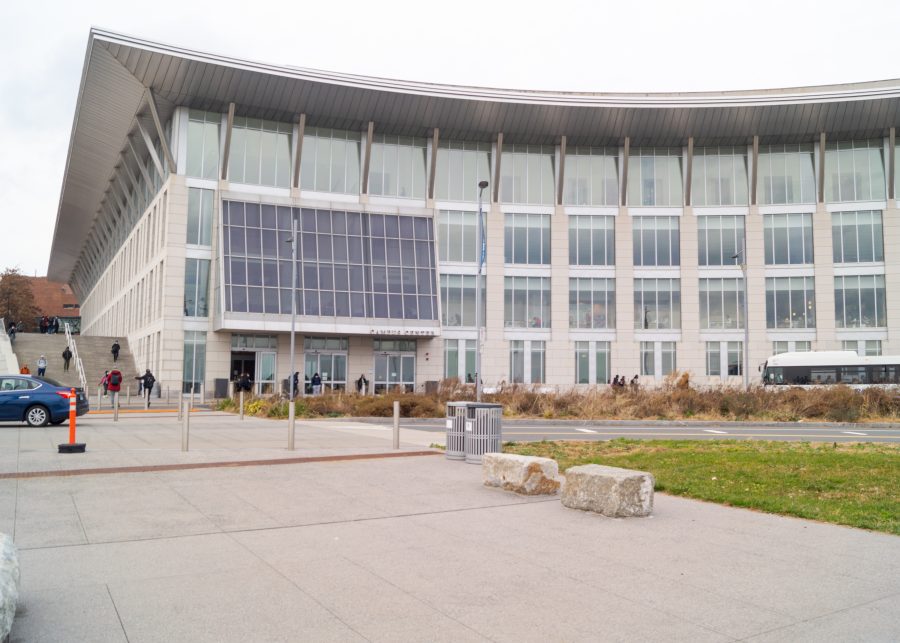Music is an art that many turn to for self-expression, community and belonging, and those who desire to teach music are tasked with creating a space where those expressions can thrive. This is the topic of “MUSIC 480: Special Topics Course, Sociocultural Perspectives in Music Education,” where Professor Sommer Forrester teaches students about the necessary sociocultural knowledge they need for future careers as music teachers in diverse contexts. The class exists as a part of a cohort of courses funded by the Mellon Foundation aimed at demonstrating to students how humanities courses can train them for productive careers, and this was shown when Dr. Nicole Robinson came to speak to the class about how teachers might approach conflicts over belonging that might lead to microaggressions in the classroom. As a former music education faculty member at various universities and the founder of Cultural Connections By Design, a diversity consulting company, Dr. Robinson is uniquely qualified to speak on subjects pertaining to both diversity and music in the classroom.
Dr. Robinson began by outlining how a successful teacher creates belonging in a classroom. She defined belonging as an idea that “goes beyond” just diversity and is “an environment where all students have the freedom to be themselves and connect with others while contributing to our common future success.” She covered four central tenets to become a “star teacher,” taken from Dr. Martin Haberman’s research:
1) People. Star teachers respect their students and generate respect in return by listening to and remembering student ideas.
2) Place. Star teachers are committed to the future welfare of their students and helping them accept the reality of working in dysfunctional bureaucracies.
3) Process. Star teachers believe that the teacher’s major task is to generate effort, not assignments.
4) Power. Star teachers ask themselves how they can be more effective and employ better strategies rather than focusing on the challenges they face in their teaching circumstances.
Talking about these principles along with showing a video of a star teacher in practice generated a vibrant discussion about openness, expectations and joy in teaching. In the video, student Molly was struck by how the teacher, Mr. Smith, felt free to discuss his teaching methods in front of the fourth grade class. This showed an openness with and respect for his students that they returned to him. Professor Forrester called attention to how that atmosphere of respect and community organized the classroom in a way that no pre-planned classroom management could do, and this led to a fruitful discussion about the role of management versus expectations that teachers can have. “We want expectations as a community, not teachers who become enforcers of compliance,” she said. Several students also noted the joy that permeated the classroom, with students eager to learn. Professor Forrester was eager to point out her sincere and enthusiastic belief that teaching and learning is the best job one can have, and these tenets of being a star teacher demonstrate a great way to approach it.
This discussion was followed by instructions on how teachers can respect their students by recognizing, identifying and countering microaggressions. Microaggression is defined by “Psychology Today” as “everyday verbal, nonverbal, environmental slights, snubs or insults—intentional or unintentional—that communicate hostile, derogatory or negative messages to target persons based solely upon their marginalized group membership.” The class shared a number of common microaggressions they have heard or experienced that fall into categories of microassaults, microinsults or microinvalidations. One of the most common ones for the class to be aware of was the ways that microaggressions take place within music, by assuming someone will have knowledge about and like or dislike a genre based on their group membership. Professor Forrester asked her class to consider the ways in which they have participated in these microaggressions, and Dr. Robinson led the class in a group activity where they filled in different types of microaggressions that they had seen or experienced. She also gave them access to an action planner where they can work out how to address conflicts that may occur in their future classrooms.
Dr. Robinson’s visit fits into the larger course goal of preparing students for the situations they will encounter teaching music in varying places to different age groups. A necessary part of this is exploring critical issues in the music education field including power, privilege, class and marginality. Alongside guest speakers in the professional music education world, students complete a number of practical assignments with relevance to their careers, including a review of the book “Hacking School Discipline: 9 Ways to Create a Culture of Empathy and Responsibility Using Restorative Justice” by Nathan Maynard and Brad Weinstein, or the podcast “Nice White Parents.” Students must include a summary of how they will apply what they learned in a K-12 teaching setting.
Music is an instrument for community, and it’s important that the music classroom is equally infused with an atmosphere of community. Through reading, listening and writing about music’s connection to sociocultural topics, students in Professor Forrester’s class are becoming better equipped to create a culture of belonging in their classrooms someday.





















































